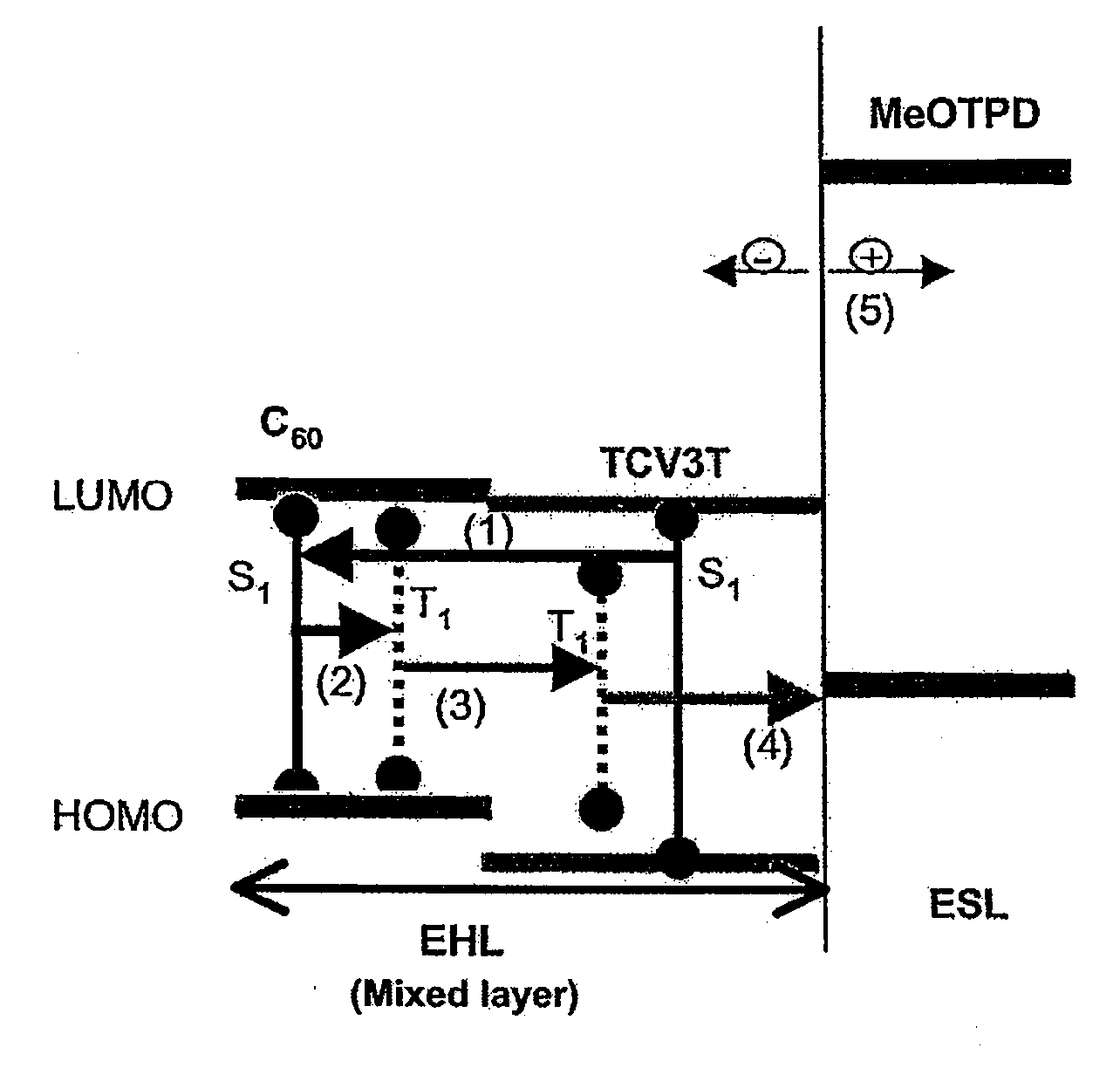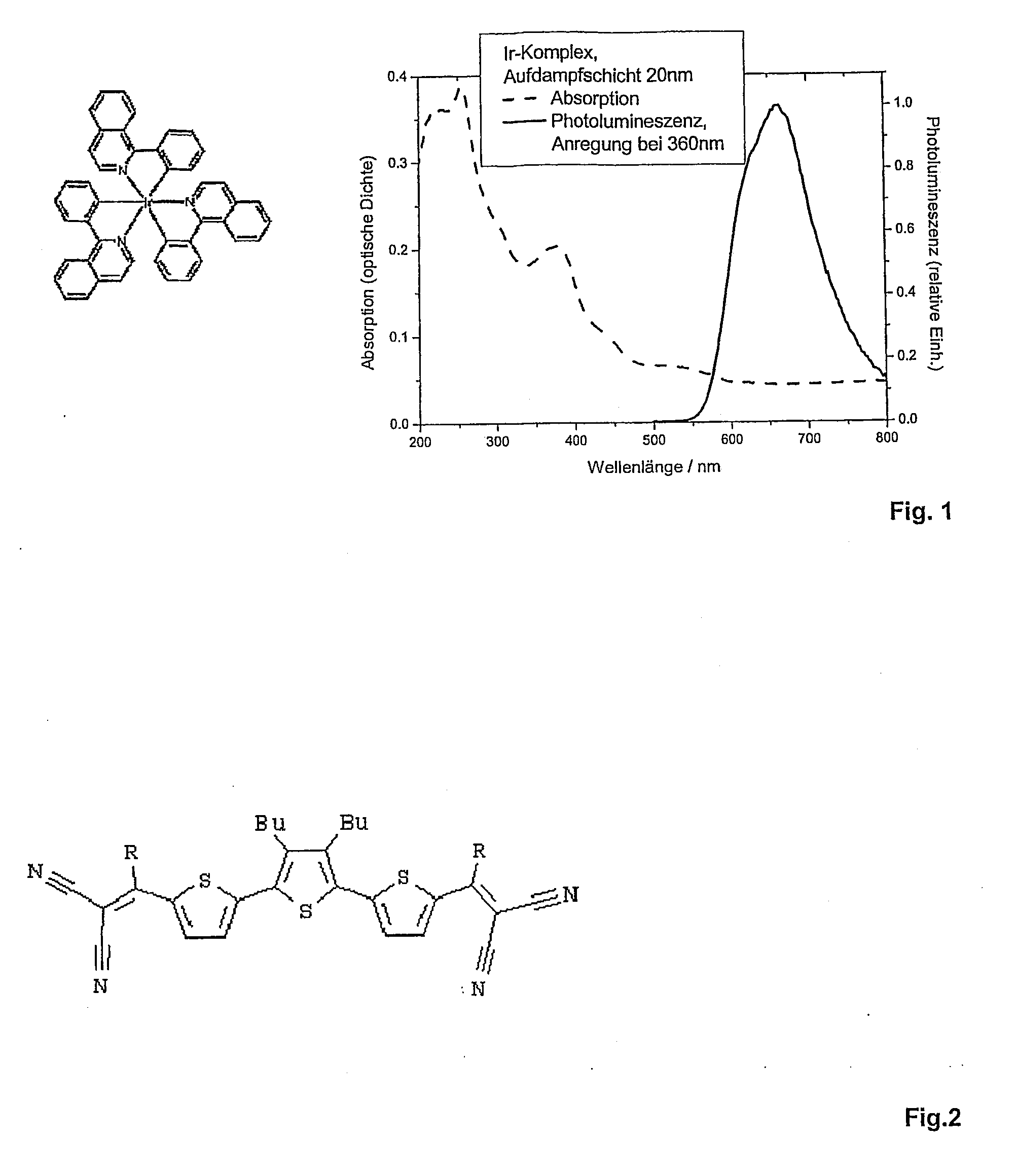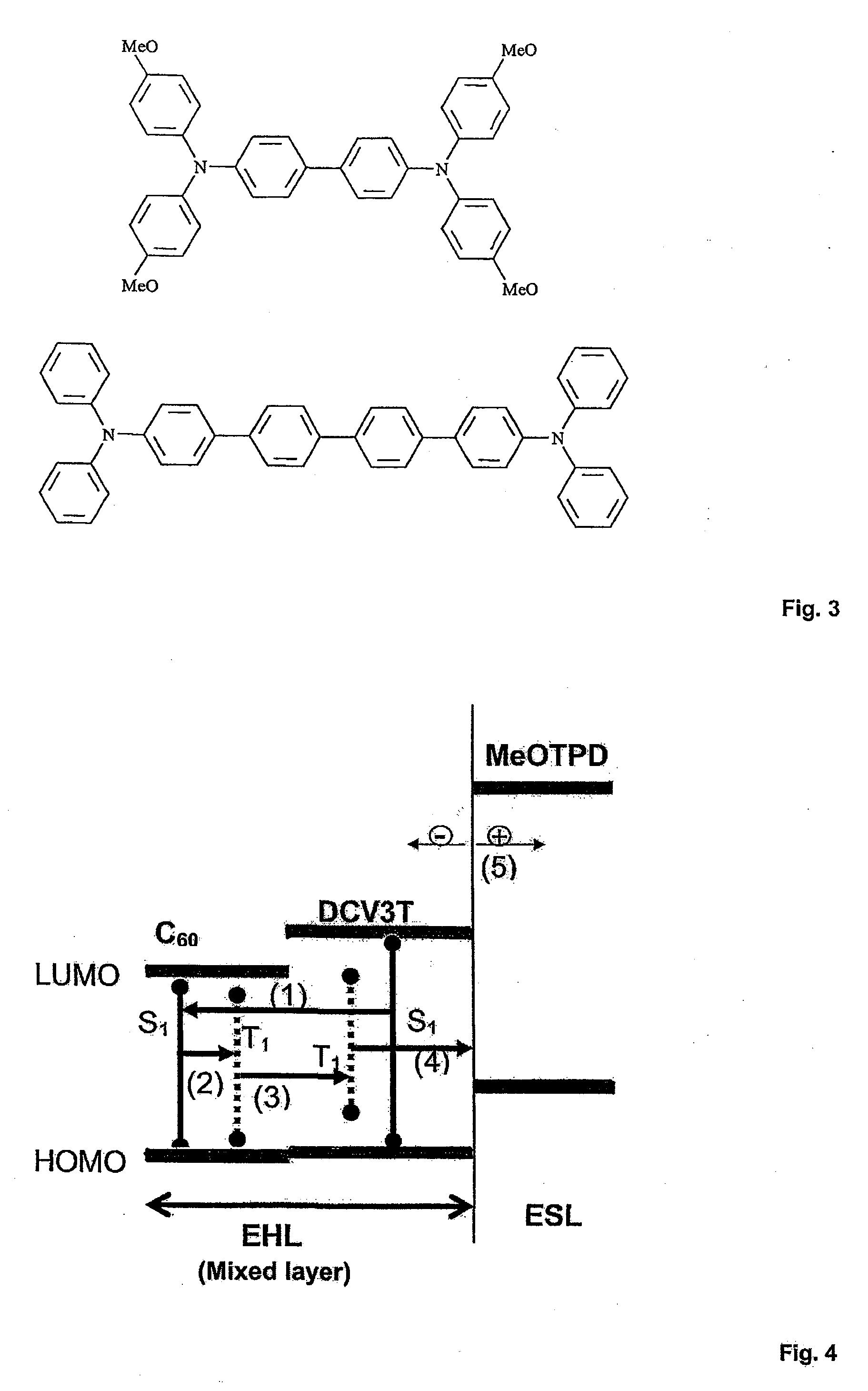Photoactive device with organic layers
a photoactive device and organic technology, applied in the field of organic photoactive devices, can solve the problems of deteriorating the transport properties of charge carriers in comparison to pure layers, inability to use monocrystalline organic materials, and difficult production of multiple layers with sufficient structural perfection
- Summary
- Abstract
- Description
- Claims
- Application Information
AI Technical Summary
Benefits of technology
Problems solved by technology
Method used
Image
Examples
first exemplary embodiment
[0095]The following layer sequence is provided in a first exemplary embodiment: ITO / DCV3T*C60 / MeOTPD / p-doped MeOTPD / gold. ITO designates a transparent ground contact here of indium-tin oxide and C60 the Buckminster fullerene.
[0096]The structure of the other materials is shown in FIG. 2 and FIG. 3. FIG. 2 shows the structural formula of DCV3T. The group R in DCV3T is a hydrogen atom but can also be a cyano group (TCV3T, cf. T. M. Pappenfus et al., Org. Lett. 5 (9), 1535-1538 (2003)) or an alkyl group in derivatives. FIG. 3 shows the chemical structure of MeOTPD (above in FIG. 3; MeO designates a methoxy group) and 4P-TPD (below in FIG. 3).
[0097]The p-doping takes place e.g., by mixed vapor deposition with perfluorinated tetracyano quinodimethane (F4-TCNQ). In this first exemplary embodiment the exciton-harvesting layer consists of DCV3T (organic material A) and C60 (further organic material B) and the exciton-separating layer of MeOTPD.
[0098]FIG. 4 shows a schematic representation fo...
second exemplary embodiment
[0108]In a second exemplary embodiment the following layer sequence is provided for the photoactive device: ITO / C60 / DCV3T*C60 / MeOTPD / p-doped MeOTPD / gold.
[0109]In distinction to the first exemplary embodiment an additional pure C60 layer is arranged here as a triplet blocking layer (TBL) between the exciton-harvesting layer and the ITO electrode. The method of functioning of the device corresponds to that of the device in accordance with the first exemplary embodiment. The triplet blocking layer fulfils the function of preventing triplet excitons that diffuse in the direction of the ITO electrode from being quenched there. Instead, the triplet excitons are reflected on C60 and have another chance to reach the interface to the exciton-harvesting layer. FIG. 7 shows a current-voltage characteristics under illumination with simulated sunlight with an intensity of 127 mW / cm2 and without illumination for a device in accordance with the second exemplary embodiment with a 30 nm-thick mixed ...
third exemplary embodiment
[0110]In a third exemplary embodiment the following layer sequence is provided for the photoactive device: ITO / C60 / DCV3T*C60 / DCV3T / MeOTPD / p-doped MeOTPD / gold.
[0111]In distinction to the second exemplary embodiment an additional pure layer (TTL—triplet transport layer) of DCV3T (organic material A of the exciton-harvesting layer) is introduced between the exciton-harvesting layer and the exciton-separating layer. The triplet excitons, that are formed in the exciton-harvesting layer, must additionally diffuse here through the DCV3T layer until they can be separated at the interface to the exciton-separating layer into holes on MeOTPD and electrons on DCV3T.
[0112]The fact that the transfer of triplet excitons takes place from C60 onto DCV3T and the diffusion of the transferred triplet excitons onto DCV3T is proven by the signal clearly coming from C60 in the external quantum efficiency of a solar cell with the layer sequence ITO / C60 / DCV3T / MeOTPD / p-doped MeOTPD / gold (cf. FIG. 8). In the...
PUM
| Property | Measurement | Unit |
|---|---|---|
| LUMO | aaaaa | aaaaa |
| HOMO | aaaaa | aaaaa |
| energy | aaaaa | aaaaa |
Abstract
Description
Claims
Application Information
 Login to View More
Login to View More - R&D
- Intellectual Property
- Life Sciences
- Materials
- Tech Scout
- Unparalleled Data Quality
- Higher Quality Content
- 60% Fewer Hallucinations
Browse by: Latest US Patents, China's latest patents, Technical Efficacy Thesaurus, Application Domain, Technology Topic, Popular Technical Reports.
© 2025 PatSnap. All rights reserved.Legal|Privacy policy|Modern Slavery Act Transparency Statement|Sitemap|About US| Contact US: help@patsnap.com



